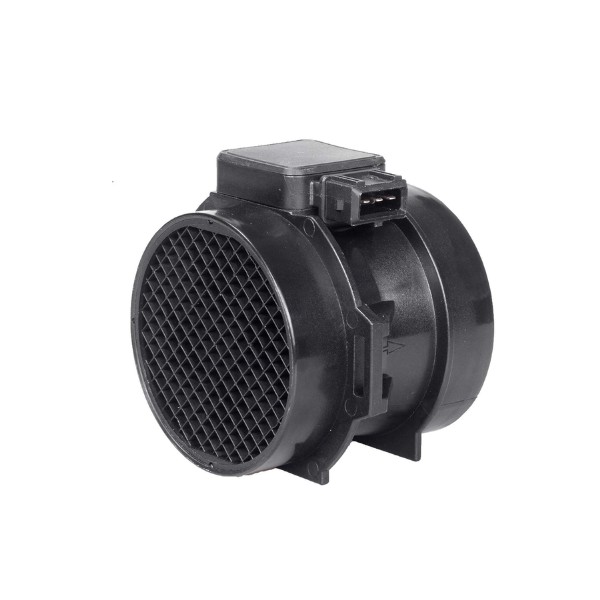Cleaning the Mass Air Flow Sensor yourself is a straightforward task that can significantly improve your vehicle’s performance. This guide will walk you through how to test your MAF sensor using an OBD2 scanner and when cleaning might be necessary. You don’t need to be a professional mechanic to perform this maintenance; with basic tools and an understanding of OBD2 readings, you can easily diagnose and address MAF sensor issues.
What is a Mass Air Flow (MAF) Sensor and Why is OBD2 Reading Important?
The Mass Air Flow (MAF) sensor is a crucial component in your vehicle’s engine management system. Located in the air intake duct, it measures the volume and density of air entering the engine. This information is relayed to the Engine Control Unit (ECU), which then calculates the precise amount of fuel to inject for optimal combustion. A properly functioning MAF sensor ensures the correct air-fuel mixture, which is essential for engine efficiency, performance, and emissions control.
OBD2 (On-Board Diagnostics II) systems are designed to monitor various aspects of your vehicle’s operation, including the performance of the MAF sensor. Your car’s OBD2 system continuously checks sensor data and will trigger the “Check Engine Light” on your dashboard if it detects any irregularities, such as incorrect MAF sensor readings. Therefore, understanding Obd2 Maf Readings is vital for diagnosing potential engine problems related to air flow.
How to Check Your MAF Sensor Reading with OBD2
Using an OBD2 scan tool is the most effective way to assess your MAF sensor’s performance. Here’s how you can check your MAF sensor reading:
- Connect your OBD2 Scanner: Locate the OBD2 port in your vehicle (usually under the dashboard on the driver’s side) and plug in your OBD2 scanner.
- Access Live Data: Turn your vehicle’s ignition to the “ON” position (without starting the engine initially). Navigate your OBD2 scanner menu to find the “Live Data” or “View Data Stream” option.
- Select MAF Sensor Parameter: From the list of available parameters, select “Mass Air Flow Rate” or “MAF Sensor (grams/second)”.
- Start the Engine and Observe Idle Reading: Start your vehicle’s engine and let it idle. At idle, a healthy MAF sensor should typically read between 2 to 7 grams per second (g/s). This range can slightly vary depending on engine size and manufacturer specifications, but it provides a general baseline.
- Test Reading at Increased RPM: With the engine running, increase the engine speed to around 2500 RPM. The MAF sensor reading should significantly increase, generally rising to between 15 to 25 g/s or higher. The reading should smoothly and proportionally increase as engine RPM increases.
- Analyze the Data: Compare your readings to the expected values. If your MAF sensor reading at idle or higher RPMs is significantly lower or doesn’t change with engine speed, it could indicate a problem with the sensor.
If your OBD2 MAF reading deviates significantly from these expected ranges, it suggests that your MAF sensor might be dirty or faulty. While cleaning can sometimes resolve issues caused by contamination, a malfunctioning sensor may require replacement.
Common Symptoms of a Faulty MAF Sensor
A malfunctioning MAF sensor can lead to various engine performance issues. Recognizing these symptoms can help you determine if testing your MAF sensor reading with OBD2 is necessary:
- Check Engine Light Illumination: A dirty or failing MAF sensor often triggers the Check Engine Light, and OBD2 codes such as P0171 (System Too Lean, Bank 1), P0172 (System Too Rich, Bank 1), P0173 (System Too Lean, Bank 2), and P0174 (System Too Rich, Bank 2) are commonly associated with MAF sensor problems.
- Hard Starting: An incorrect air-fuel mixture due to a faulty MAF sensor can make your engine difficult to start.
- Rough Idling: The engine may idle erratically, roughly, or stall, as the ECU receives inaccurate air flow data and struggles to maintain a stable idle.
- Poor Acceleration: Your vehicle may hesitate or lack power when you try to accelerate, as the engine isn’t receiving the correct air-fuel mixture for increased demand.
- Reduced Fuel Economy: An improperly functioning MAF sensor can cause the engine to burn fuel inefficiently, leading to noticeable decrease in miles per gallon.
- Black Exhaust Smoke: In some cases, a rich air-fuel mixture caused by a faulty MAF sensor can result in black smoke coming from the exhaust pipe.
Cleaning vs. Replacing Your MAF Sensor
If your OBD2 MAF reading indicates a problem and you are experiencing the symptoms mentioned above, cleaning your MAF sensor can be a viable first step. MAF sensor cleaners are specifically designed to safely remove contaminants without damaging the delicate sensor wires or elements.
However, cleaning is not always a guaranteed fix. If the sensor is internally damaged or has failed electronically, cleaning will not restore its functionality. After cleaning, re-test the MAF sensor reading with your OBD2 scanner. If the readings are still abnormal or the symptoms persist, replacing the MAF sensor is likely necessary.
By understanding OBD2 MAF readings and knowing how to interpret them, you can effectively diagnose and address potential issues with your Mass Air Flow sensor, ensuring your vehicle runs smoothly and efficiently.
